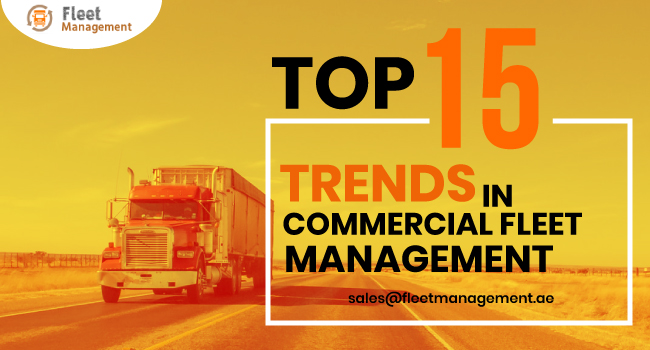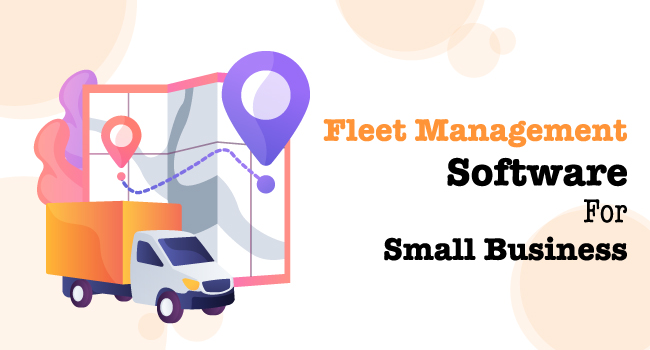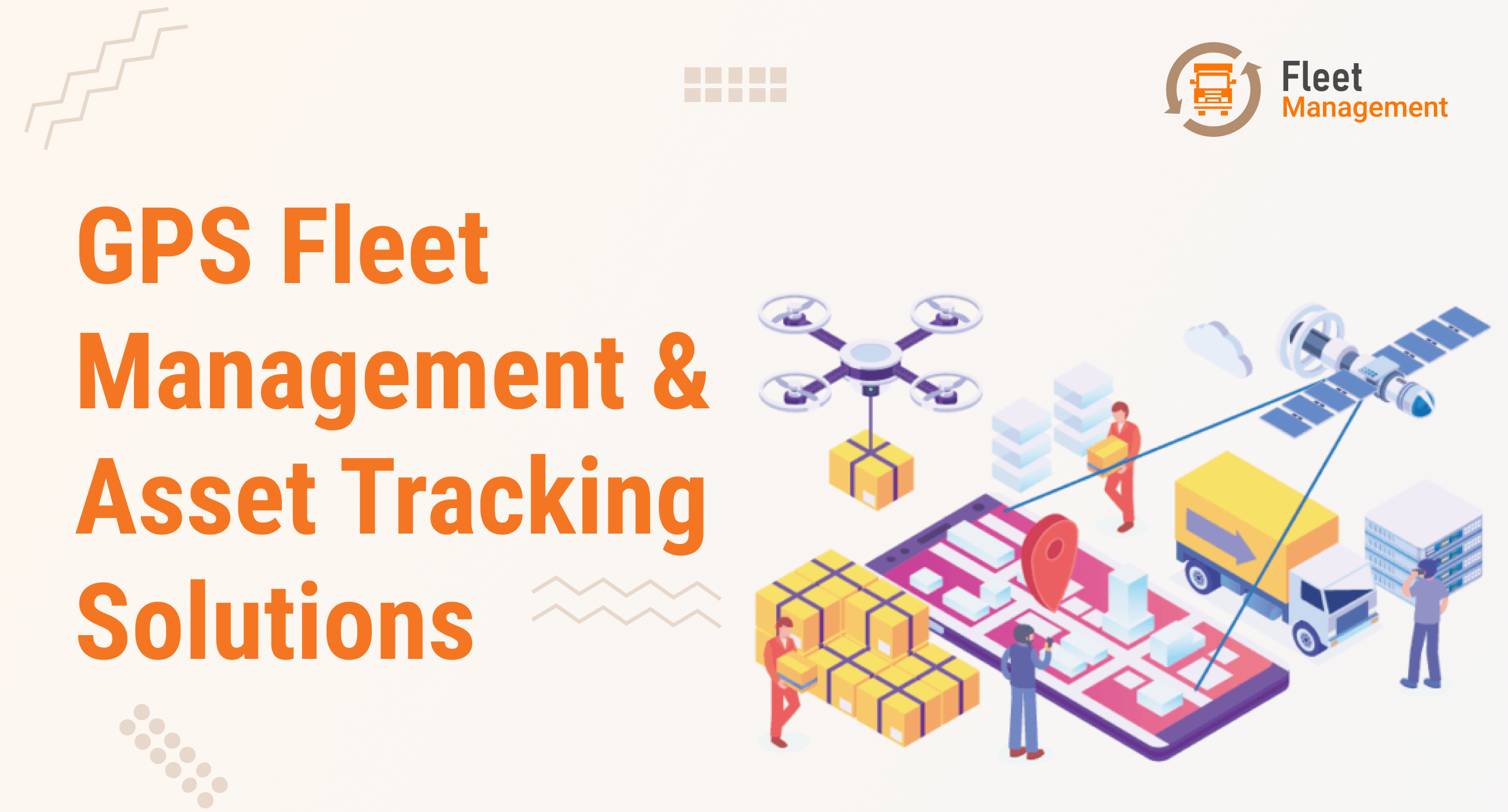Our Blogs
 Fleet Management()
Fleet Management() Car Rental Software()
Car Rental Software() Fleet Drivers()
Fleet Drivers() Infographics(0)
Infographics(0) News(0)
News(0)
Service We Offer
Follow Us
Top 15 Trends in Commercial Fleet Management

Fleet management is the function of companies depending on transportation for their business to organise and coordinate their vehicles to improve efficiency, reduce costs, provide better services, reduce risks associated with vehicles, all while having 100% compliance with the government regulations.
With the emergence of e-commerce, the efficiency of fleet management has become all the more important. Even though the concept of fleet management has been around for a very long time, new technology has made it more simple and organised.
Read Also: How To Start a Vehicle Tracking and Fleet Management Business
Managers have found ways to use the technology to their greatest advantage thus making them the top trends in commercial fleet management.
The main objectives of commercial fleet management are:
- Efficiency
- Minimisation of operational cost
- Maintain vehicles
- Increase safety
- Coordination
Improvement in technology available to fleet managers makes all this possible as long as they know what technology is best suited for their operations and how to derive the most benefit out of it.
Some of the top trends in commercial fleet management are as follows:
1. Increased Use of Telematics
Telematics has become the basis of modern-day fleet management. It is a combination of telecommunications and informatics that managers use to monitor their vehicles using GPS and other navigation systems.

Any information about your vehicle is available in real-time. Insight into the driving pattern and behaviour of the driver, engine maintenance, spare part inventory, fuel economy, estimated arrival time, etc. can all be obtained through telematics.
With the help of this technology, the cost of operation is reduced as fleets are being managed more efficiently and vehicles are utilized optimally.
2. More Reliance on Data
The trend of using data in fleet management has been around for several years now and it is growing more prominent every year. Managers collect data points, analyse trends and make well-informed decisions.
This allows fleet managers to take a proactive approach towards their operations. Data gives them an insight into things like the best routes to take, what time to take those routes, predictive maintenance analysis, driver behaviour, climatic conditions, etc.
3.Autonomous Truck Technology
Autonomous trucks or self-driving trucks are the newest trends in commercial fleet management. It has gained a lot of attention in the past few months.
Instruction on how to use autonomous vehicles and details about these vehicles can be obtained by contacting popular technology companies like Tesla and Waymo. Many fleet management companies are planning to include more autonomous trucks in their fleets.
Latest car technologies like vehicle to vehicle communication and forward collision avoidance algorithm systems can help improve road safety. Even though there are still some safety concerns regarding autonomous vehicles, it is already being advertised as a safer alternative to traditional driving.
4. Video Analytics
Video analytics helps in monitoring the behaviour and health of truck drivers in order to reduce accidents. Unnecessary fuel consumption can also be minimised. It is one of the most popular trends in commercial fleet management and logistics industry now.
To install video analytics, onboard computers with 4G and GPS, Internet Protocol (IP) cameras, accelerometer and visual analytics software is required.
5. Advanced Driver Assistance Systems
Advanced Driver Assistance Systems, more commonly referred to as ADAS, are artificial intelligence-based systems that are installed inside vehicles to assist the driver in a variety of ways.
Read Also: Telematics For Fleet Management – All You Need to Know
These systems can identify different environmental conditions and driver behaviour and make necessary adjustments to ensure safety. It can also help drivers adjust to different traffic signs; avoid pedestrians, obstacles and other dangers.
6. Dash Cam Monitoring
Most of the accidents on the roads happen due to distracted drivers who are either using their phones, eating something, talking to passengers or even dozing off. Dashcams (dashboard camera) are used to monitor drivers so that such distracted behaviour does not occur.

A single accident can cause a huge loss to a fleet management company in the form of loss of reputation, compensation, insurance and other legal costs. The presence of dash cams in vehicles makes drivers more responsible and in a great way help in the safety of everyone on the road.
7. Predictive Maintenance System through IoT
Telematics has helped managers to maintain their vehicles proactively but with the emergence of IoT, predictive maintenance is taken to a whole new level.
Things that are not noticed externally like when the components of the vehicle is overheated or when the engine is likely to fail are sensed by the IoT sensors and drivers are alerted about it.
Regular services of the vehicle and fixing problems before the entire thing fail reduce operation costs and helps the vehicle last longer in its best conditions. The cost of replacement of vehicles in case one fails is also no there.
8. Employee Recruitment and Retention
Hiring and retaining skilled workers is a huge task for fleet management companies especially since the labour supply has reduced.
There is a huge demand for workers with necessary skills and since they are very rarely available, companies make big offers to attract them, putting smaller companies at a huge disadvantage. Talent is taken away by the bigger companies by providing attractive incentives such as signing bonuses, performance bonuses and professional development training.

Retaining employees is also another important task for them and for that the employees have to feel involved and there should be a certain level of transparency in the management to build loyalty.
9. Transition to Synthetic Motor Oils
The use of synthetic motor oil in place of traditional mineral-based motor oil is increasing as synthetic motor oil has fewer impurities and robust additives making it last longer.
It does not break down as fast as mineral-based motor oils and retains its viscosity for a longer period. Synthetic motor oils help to reduce tailpipe emissions and maintain corporate average fuel economy standards.
Synthetic oils allow increasing the gap between predictive maintenance intervals. Even though the cost of the oil is higher, a transition to it reduces the maintenance costs of the vehicle.
10. Focus on Risk and Safety
One of the major concerns nowadays is the safety of fleets and avoidance of risk. Fleet managers everywhere are focusing more on safety precautions so that their vehicles and drivers, other vehicles on the road and the pedestrians are always safe.

This is a major concern and great emphasis is put on hiring competent drivers who will abide by the company regulations and observe safety procedures.
11. Use of Electric Vehicles
More and more fleet managers are now showing interest in electric vehicles for their fleets. Plans for adopting electric vehicles are slowly gaining momentum.
Electric vehicles are better for the environment as it reduces carbon emission. Fleet managers are getting interested in electric vehicles because of the elimination of fuel costs and a decrease in repairs.
Electric vehicles may replace conventional vehicles in intermodal ports, last mile delivery trucks and other short stop trips. The one major obstacle to adopt electric vehicles is the lack of charging infrastructure. Ports for charging the vehicles also have to be set up in order for the adoption to be effective.
12. Mobility as a Service (MaaS)
Mobility as a service is a shift from personally owned vehicles to mobility offered as service. Modes of transport are offered to customers based on their individual preferences.
Read Also: How Can We Upscale Our Business?
This is usually seen in services like Uber, Ola and Lyft. However, this trend is now being spread to truck fleets also. Usually, fleet managers have their own trucks and use it for their services only.
But nowadays different fleet managers are pooling their vehicles to provide the best service according to the needs of the people that employ them. Different companies are sharing their vehicles to provide a variety of options for their customers.
13. Increased Use of LED Lighting
Fleets usually used strobe lighting in their service vehicles. But nowadays, there is an increasing trend of using LED lighting as brake lights, turn signals and emergency lights. LED lights are being used more because of their long lifespan, ease of installation and increased intensity.
14. Implementation of Radio Frequency Identification Tags
Radio Frequency Identification Tags are a type of tracking system using radio waves. This is used to identify and track inventory and assets.

The cost of implementing and using RFID tags is getting lower with improvement in the technology making it very cost-effective. An advantage of RFID tags is that it reduces the amount of lost cargo resulting from pilferage.
More fleet managers are using RFID tags to keep track of the cargo that is transported in their vehicles.
15. Leveraging Technology to Manage Fleet Costs
When so many advanced technologies are available to the managers, it is their duty to make use of these technologies to the maximum extent so that the cost of operation can be reduced.
First of all, telematics makes fleet management an automated process, thereby reducing the time spent on manually updating their database and reducing the risk of errors. There is also a reduction in costs as the number of employees can be reduced.
IoT and telematics help in properly scheduling predictive maintenance of the vehicles thereby reducing the risk of sudden failure of the vehicle and eliminating the cost of replacing the vehicle.
Insurance rates are increasing steeply nowadays. All fleets have to have an insurance policy. With the help of dashboard cameras and video analytics, driver behaviour can be observed to reduce risks and decrease insurance premiums.
Conclusion
The Fleet management industry is developing every year as newer technologies are introduced. With an improvement in technology comes greater competition. Identifying and following the trends of the industry can help managers stay ahead of the competition.
Discussed above are the top trends in commercial fleet management that managers use to make their operations more efficient and organised. Nowadays, following traditional methods of fleet management will get you nowhere.
Regulations enforced by the government keep on changing and everyone is in a race to find ways to comply with these regulations while increasing their business also. Managers have to choose the technology they think is best suited for them and use it in their business to help them succeed.








